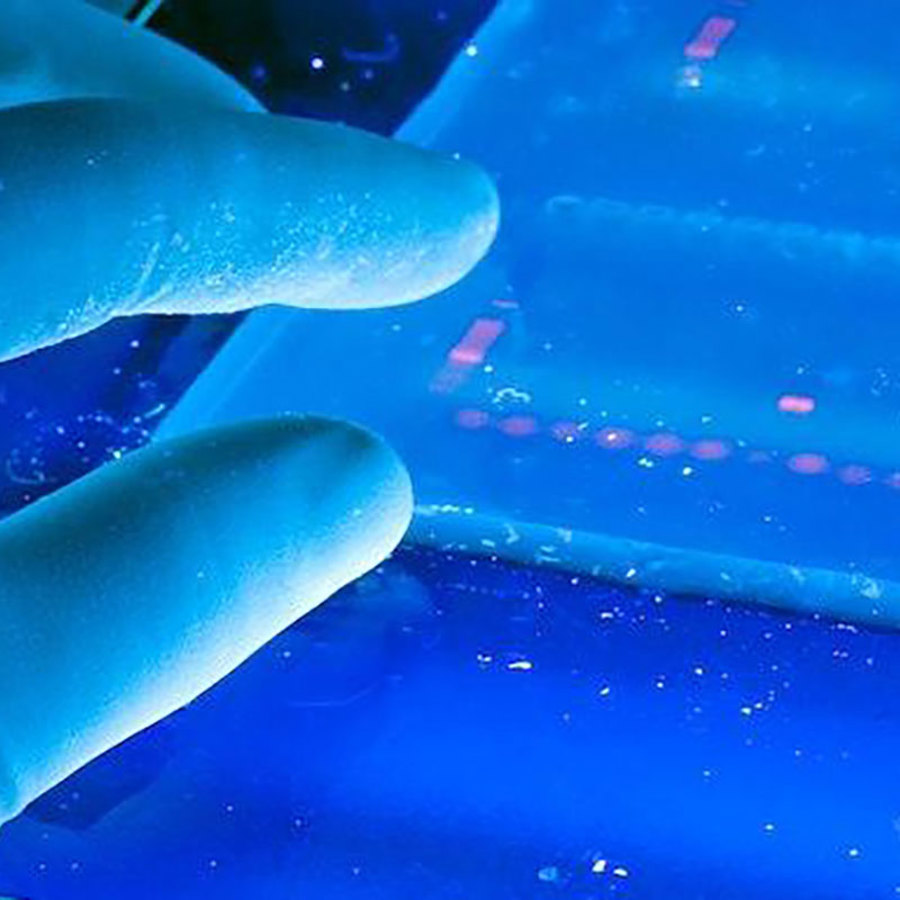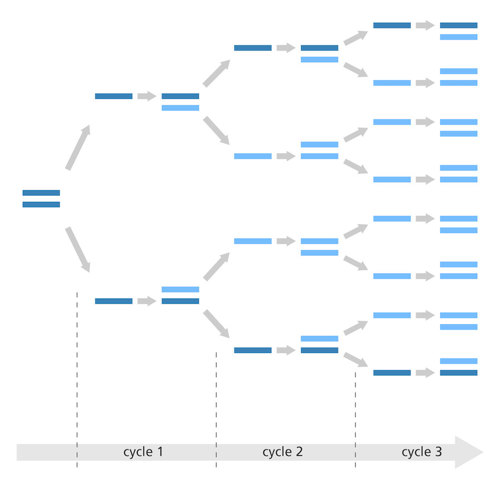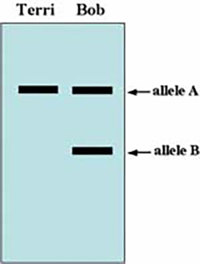
What is a polymorphic microsatellite?
July 22, 2004

- Related Topics:
- Genotyping,
- Genetic testing,
- Forensics
A curious adult from Malaysia
“What is a polymorphic micro-satellite? How can the PCR reaction help us determine if the gene is polymorphic or not?”
A micro-satellite* is a small sequence of DNA that is repeated many times. The size of the repeated sequence is usually between 1 and 4 base pairs. When the number of repeats varies between people, a micro-satellite is called polymorphic.
Micro-satellites are usually located in DNA outside of genes and are found in all sorts of plants and animals. They can be used to identify individuals based on their DNA, which is useful in figuring out who the father of a child is or who committed a crime.
How do scientists go about figuring out how many repeats someone has in a certain micro-satellite? One of the easiest ways is with PCR.
PCR is a technique that is used to increase the amount of DNA that a scientist has to work with. In PCR, small pieces of DNA called primers are used that flank the DNA sequence in which you are interested. Special enzymes then use the primers to make enough of the DNA in between for scientists to see with special chemicals.

How can PCR be used to detect if someone has a different number of repeats than someone else? The answer is that the size of the DNA that is “PCR’d” will be different depending on how many repeats a person has.
An example might help make this clearer. Imagine there is a micro-satellite that comes in two forms or alleles; an A form with 56 GT repeats and a B form with 20 GT repeats. The DNA that comes out of the PCR reaction would be different sizes for each allele – the A form would be 72 base pairs larger than the B form.
The DNA from a PCR reaction is then run on an agarose gel. In an agarose gel, smaller pieces of DNA run faster and so are more towards the bottom of the gel. From looking at the figure below, can you guess who has a copy of A and B and who has two copies of A? That’s right, Bob has a copy of A and B meaning he is heterozygous for this allele. Terri has two copies of A and so is homozygous.


From results like this, Bob and Terri can be told apart by their DNA. If there were a crime committed where some DNA sample was left behind and either Bob or Terri did it, then you could tell who did it from this simple test.
* Micro-satellites are also referred to as variable number tandem repeats (VNTR’s) or short tandem repeats (STR’s). Certain diseases, such as Huntington’s Disease, are caused by tri-nucleotide expansions, such as CAG. When the CAG tri-nucleotide expands beyond the normal copy number, it causes the disease. Such tri-nucleotide expansions are not typically considered a micro-satellite because micro-satellites are considered to be selectively neutral sequences (they confer neither advantages nor disadvantages to the individual carrying it).
Read More:

Author: Ky Sha
When this answer was published in 2004, Ky was a Ph.D. candidate in the Department of Biology, studying somatic gene silencing in c. elegans in Andy Fire’s laboratory. Ky wrote this answer while participating in the Stanford at The Tech program.
 Skip Navigation
Skip Navigation
